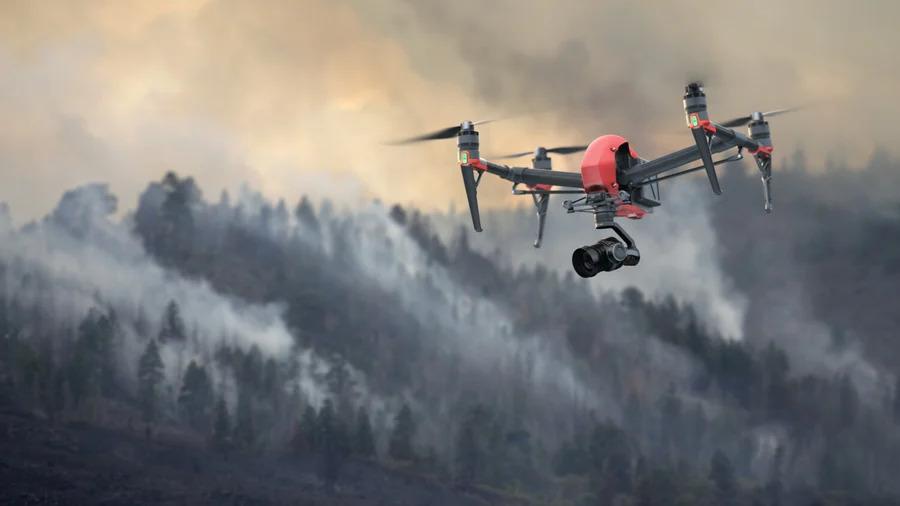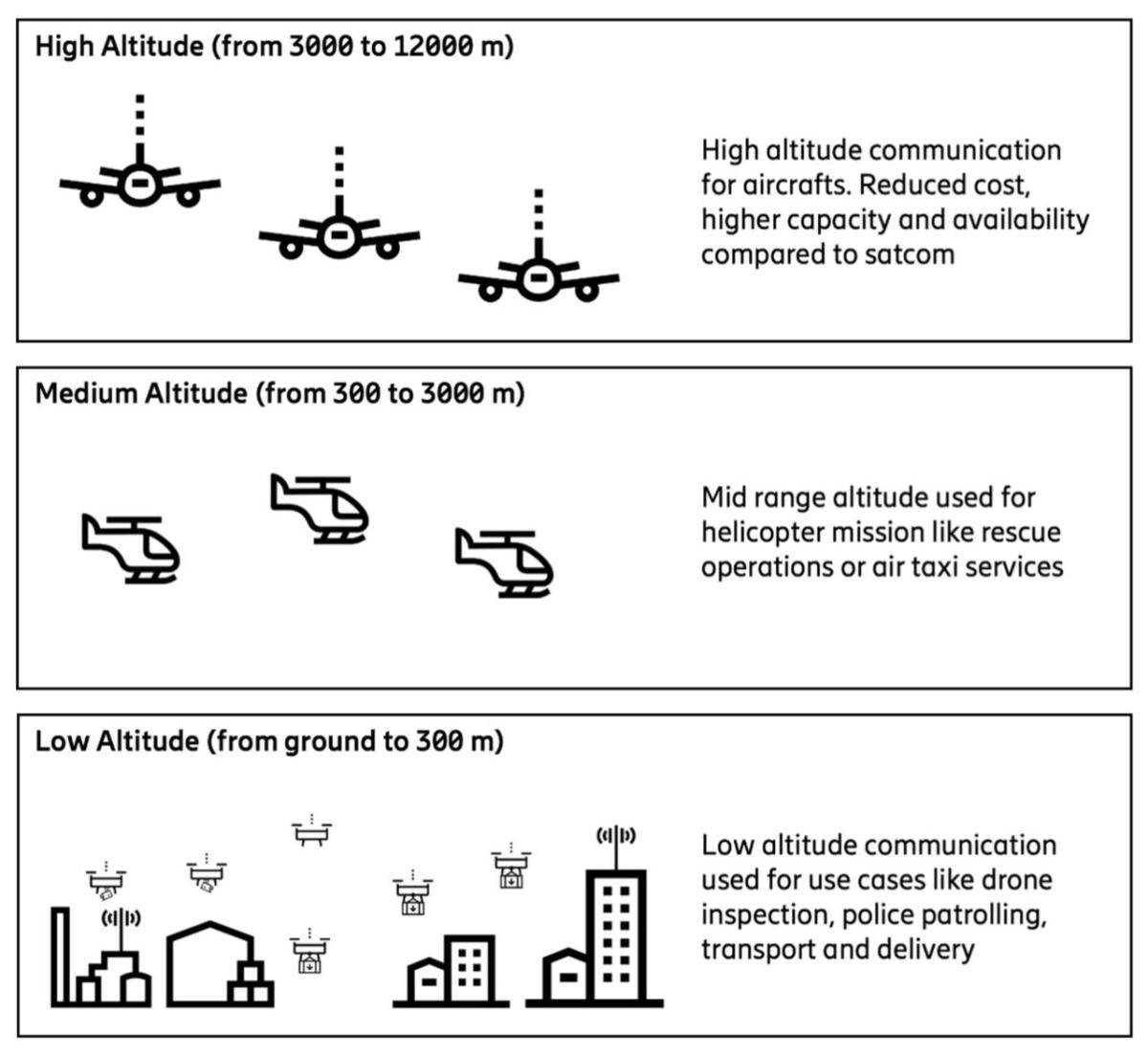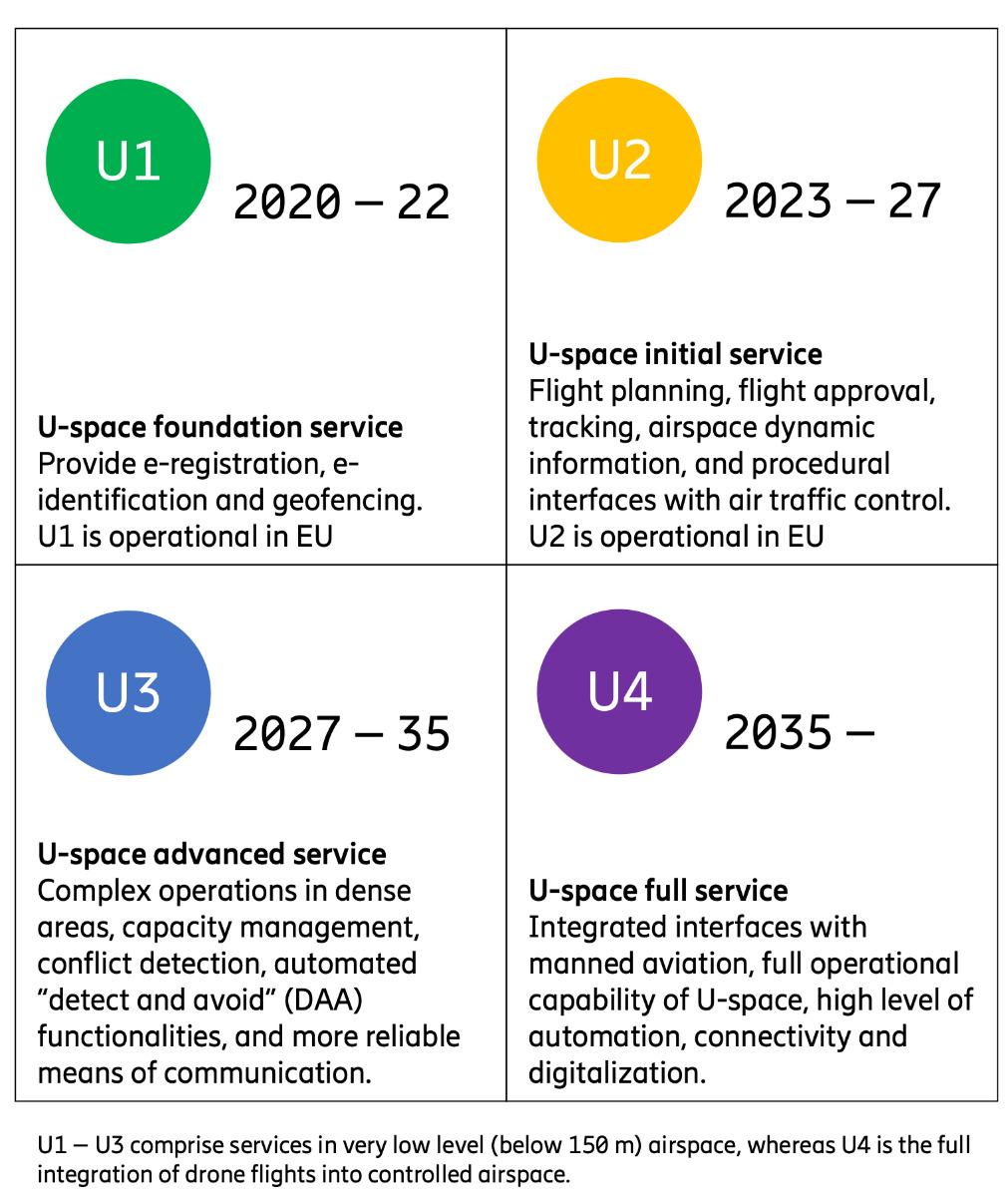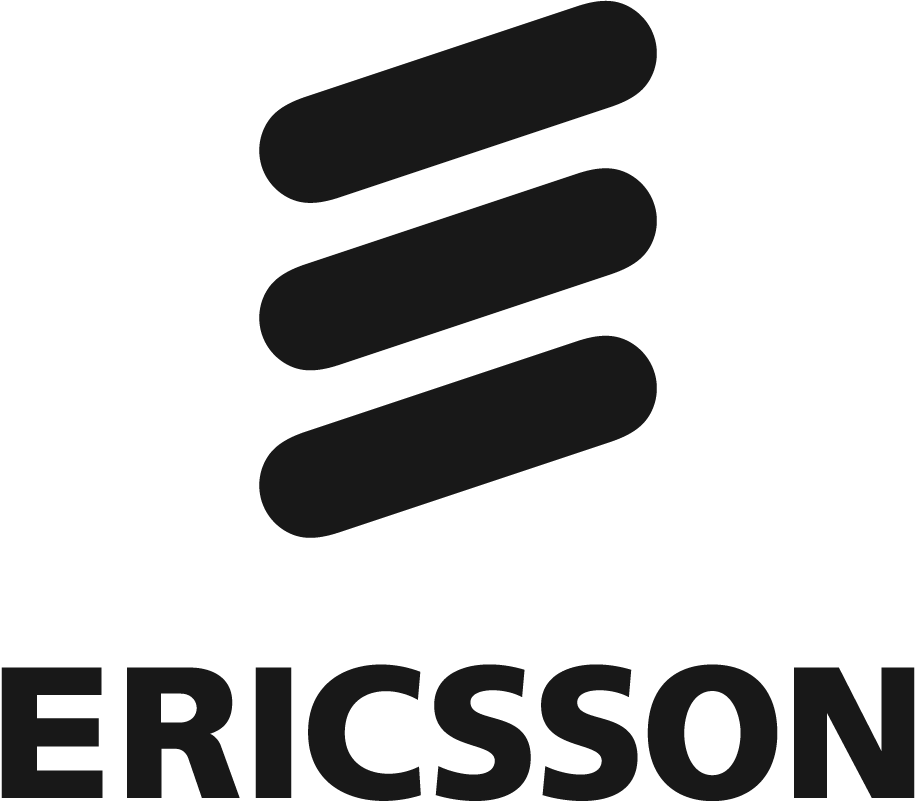What Is Digital Airspace? Explore the Opportunities of a New Horizon
By Mikael Timsäter, Director, ICT Strategy & New Business Development, and Manuel Ruiz, Head of Mission Critical Networks
Originally published by Ericsson
Did you know that extending cellular connectivity to the skies can save lives? Or enable sustainable transport for the future – and safe drone deliveries to your door? Join us as we explore digital airspace and all the opportunities this exciting new frontier of connectivity has to offer.
Cellular connectivity is almost everywhere these days – transforming the world around us, enabling everything from smart homes and the Internet of Things (IoT) to fully immersive virtual worlds. In fact, according to the most recent Network Coverage Outlook Mobility Report, 3GPP network coverage (that’s 3G and above) now serves roughly 95 percent of the world's population, with 5G population coverage projected to reach 85 percent by 2028.
But although mobile coverage will soon cover the majority of human activities on the ground, there’s a vital dimension that has been left behind – a whole new frontier of opportunities, both for business and society. If we truly want to realize a future where limitless connectivity means limitless possibilities, we have to start looking in a new direction. Up.
You are now entering the exciting and elevated world of digital airspace.
What is digital airspace?
When we talk about digital airspace, we are talking about connectivity above the ground – whether that’s an altitude of 150 meters or 5,000 meters and beyond.
The mobile broadband technology we use today, although widespread and unmatched in its robustness and capabilities, was purposely developed and optimized to support users and services at the ground level – essentially, 2D use cases. To put it simply, our existing 3GPP network infrastructure simply wasn’t designed to provide coverage to direct cells and beam into free airspace.
At heights of only 50 meters, radio interference can become a major issue. At 150 meters and above, coverage becomes poor and unreliable. Both of these issues – interference and unreliable coverage – lead to lower bit speeds, higher latency and more connection interruptions. But how can we overcome them? And why is mobile broadband connectivity in the air important?
Imagine you’re a paramedic in an ambulance, transporting a patient in a critical condition to intensive care. In a situation where every minute counts, a rapid diagnosis from a specialist doctor could mean the difference between a life saved or lost. Fortunately, 5G connected ambulances can connect patients, ambulance workers and remote medical experts in real-time – not only through voice, but full high-definition video and haptic gloves, bringing zero-latency procedures to wherever they are needed.
But what if that patient was being air-lifted to safety, on a helicopter or aircraft? As our ground-based services move ahead, will our skies be left behind?
Digital airspace technologies – where are we now?
When it comes to the aviation industry, there are three prevalent conventional communications technologies, some of which have been in use for more than 50 years.
-
Very high frequency (VHF) radio
Common in civil aircraft communication systems, VHF is essentially a walkie-talkie voice system operating on a specific band spectrum, with fairly limited bandwidth and very limited capacity to send data.
-
Automatic Dependent Surveillance Broadcast(ADS-B)
ADS-B is a surveillance technology an aircraft can use to communicate its position to other aircraft and to air traffic management, with no data-sending capacity beyond basic details like the aircraft’s longitude, latitude, height, direction and speed.
-
Satellites
At high altitudes and in remote locations, satellite communication has been the only way to get some level of voice and data connectivity. Unsurprisingly, the use of geostationary (GEO) satellites (located high above Earth) comes at a very high cost – in bandwidth and latency as well as service costs. In recent years, we’ve also seen the emergence of low Earth orbit (LEO) satellites which require less power to transmit signals to the ground, provide lower latency for communications services and have lower service costs than their higher-orbit predecessors.
Now we understand some of the main conventional technologies operating in the digital airspace, let’s look at what role 3GPP technology can play – and why it provides a better option for meeting future airborne demands.
3GPP reaches new heights
Ericsson has been investigating the possibilities of reliable communication in the digital airspace for years, acknowledging the performance and additional capabilities such as data sending that 3GPP connectivity can offer – particularly for mission-critical communications, drone operations and management. Finally, we have reached a point where new technology is taking us to greater heights – and enabling brand-new services and revenue opportunities.
4G and 5G unlocking opportunities in the sky
How mission-critical mobile broadband solutions for the digital airspace are built will depend on the height above ground at which coverage is needed, as there are different demands depending on the altitude. It is important to consider horizontal and vertical aspects in handover and neighboring cell relation. Use case requirements on low latency and high data throughput with precise position accuracy must also be taken into account, as well as Doppler effect compensation for air vehicles with relatively high speed.
At low heights above the ground – below 300 meters – CSPs can generally leverage existing network infrastructure with some enhancements. However, at higher altitudes above 300 meters, interference issues and handover challenges become more of an issue, especially for high-speed use cases. Therefore, these typically require the use of an add-on dedicated sky network for coverage in the air, as well as uptilt antennas and high-resolution beam management.
One example of such a dedicated network is Teracom, a Swedish state-owned company that acquired radio spectrum and repurposed existing high mast radio tower infrastructure – originally built for radio broadcast – to offer air-ground-air coverage across the country. Featuring around 160 sites nationwide, with an average antenna height of 150 meters and some reaching up to 300 meters (powered by Ericsson 5G-ready Massive MIMO), the network has successfully delivered coverage for altitudes up to 5000 meters and above.
The mission-critical coverage and data-sharing capabilities this network enabled have already shown great value and potential. This is the most mature digital airspace market area, where opportunities already exist today – and the first of two we will dive into in more detail here.
Mission-critical communication use cases: opportunities await
When it comes to public safety operations, real-time information, efficiency and safety are all vital. In one use case tested in the trial with Teracom, an emergency call was simulated, reporting the presence of a fire somewhere in the forest area. Traditionally, for this type of emergency call, responders would be sent out in a vehicle to conduct an inspection and decide what resources are needed and how many people need dispatching.
With 3GPP coverage, they were able to immediately send out a drone equipped with multiple sensors for wind speed, temperature and location, as well as with a video and infrared camera, which could send back high-quality video of the scene in real-time, as well as data on the environmental conditions. With 5G connectivity, drones can be used beyond visual line of sight to perform fire inspection tasks and send back data for better decision-making, such as the type and volume of resources required for firefighting.
While mission-critical areas such as public safety, search and rescue operations and the maintenance of utilities and infrastructure like railroads would all clearly benefit from these technologies, the opportunities also extend much further. We already touched on the possibilities for healthcare – drones for mission-critical healthcare applications can save lives, not to mention our example of enabling the connected ambulance use case to truly take flight. Sectors such as agriculture, mining, oil and gas, construction and real estate, and even our own telecoms industry also have a lot to gain from smart site monitoring and maintenance.
The drones are here: are we ready?
According to Grand View Research, the global commercial drone market was estimated at USD 29.86 billion in 2022, and is predicted to grow at a compound annual growth rate of 38.6 percent from 2023 to 2030. Industries are increasingly looking to use drones for a wide range of purposes:
-
Agriculture
Drones equipped with sensors and cameras can be used to monitor crop health, detect nutrient deficiencies, and identify pests and diseases. This can help farmers optimize their use of pesticides, fertilizers and water, increase crop yields and contribute to wildlife protection or control.
-
Construction
Drones can be used to conduct site surveys, monitor construction progress, and inspect buildings and infrastructure. This can help contractors identify issues early on and reduce the need for costly manual inspections.
-
Energy
Drones can be used to inspect power lines, wind turbines and solar panels, as well as monitor oil and gas pipelines instead of using more costly helicopters. This can help energy companies identify and fix problems more quickly, lower costs and reduce the risk of accidents.
-
Logistics
Drones can be used to automate delivery of packages and goods making delivery quicker, more efficient and more sustainable. This can be especially useful in remote or hard-to-reach areas but also in urban and suburban areas with a lot of road traffic.
-
Mining
Drones can be used to survey mine sites and monitor stockpiles, as well as to inspect equipment and infrastructure. This can help mining companies reduce costs, improve safety, and increase productivity.
Mission-critical and mass-market parcel delivery will relieve the need for ground vehicle transport, reducing road traffic and emissions for a more sustainable solution. Meanwhile, mobility infrastructure and services in metropolitan areas are already at their limits. A range of solutions are already emerging on the road to autonomous transportation. Public transport, active mobility, self-driving vehicles and ride-sharing services will be vital to address these challenges and provide more efficient, sustainable and equitable transportation options.
Innovative new solutions are soon to follow, with trends already suggesting that pre-commercial piloted air taxis are likely to emerge in the next two to three years. Today drones may be collecting data – but tomorrow they will be moving goods, and in the future, they will be moving us.
The capabilities necessary for many of these use cases have already been demonstrated utilizing 5G networks, like TDC and Ericsson’s collaborative pilot and subsequent tests summarized in a GSMA Foundry case study from last year.
The role of 3GPP
As discussed in an earlier blog post on the Internet of Drones, 3GPP research projects dating back to 2016 have explored the feasibility of using existing LTE networks to provide connectivity to low-altitude drones. These have also acknowledged the challenges related to interference as well as mobility – particularly as the density of drones, or unmanned aerial vehicles (UAVs), increases.
The availability of radio frequency spectrum resources also plays a critical factor in enabling reliable communication services to UAVs. Most drones today use unlicensed spectrum, which will not be sufficient going forward as new use cases emerge and the volume of drones increases. It’s also important to note that the spectrum situation differs from country to country, and some countries still lack regulation in this area.
Despite this, 3GPP connectivity offers a wide range of benefits for UAVs that are not possible with the existing communications technologies – not least of which is enabling real-time data-sharing and constant connectivity. Network exposure application programming interfaces (APIs) will enable dynamic control of quality of service (QoS), drone identification, drone location tracking, 3D coverage maps and geographic SIM density – all of which will result in improved safety, efficiency and cost savings for the aviation industry.
The use of 3GPP APIs will also open up new opportunities for innovation and collaboration between aviation and mobile network industries, leading to the development of new products and services that can further enhance the digital airspace ecosystem. Ericsson Drone Mobility has successfully demonstrated how some of the telecom APIs like QoS and SIM density can be leveraged to make drone flights safe and secure.
Ericsson subsidiary Vonage, a leading Communication-Platform-as-a-Service (CPaaS) and aggregator of network APIs, is already working with mobile network operators and application service providers to help make 5G-enabled APIs like Location, QoS on Demand, Security and other network-aware APIs available that can be used by the aviation and drone industry on a global scale.
But to realize the full potential of UAV technologies, we must first solve the challenges that large quantities of aircraft will pose to air traffic management (ATM), and more specifically, how the requirements of UAV traffic management (UTM) can be met, both now and in the years to come.
Airspace management: the major future use cases start now
Today, ATM is still a fully manual process. A pilot will contact air traffic control by VHF radio and be guided where and when they can land. But if we introduce UAVs to the mix, things get more complicated. In the near future, a drone user will need to send a request to the UTM in advance, stating their intended departure and arrival locations, and be given a route and timeslot they must use. With existing or other new proprietary technologies enabling command and control connectivity, the drones could perhaps communicate the necessary information to a unified ATM/UTM.
But as the volume of drones continues to grow (as it will), and shared airspace means full synergy with ATM becomes a necessity, full, highly-automated integration with UTM will be needed. Automation and artificial intelligence will be an absolute must for safe overall traffic management, including monitoring where all the aircraft and drones are, where they are going, and what happens if something goes wrong.
Ready, steady, go: the drone race is on
The global race towards drone readiness has just begun, but the European Union is well-positioned with a clear roadmap. Regulatory frameworks have been put in place to ensure a safe and smooth introduction of UAVs in harmony with aviation, including requirements for UTM.
According to the vision outlined in the European Drone Strategy 2.0, “by 2030 drones and their required eco-system will have become an accepted part of the life of EU citizens,” by which time they expect the current U-space regulatory framework (and therefore high-capacity UTM) to have been completely rolled out in the EU, and that “additional advanced U-space services will support large scale highly automated and digitally connected affordable, safe, secure, and environmentally friendly unmanned aircraft operations in several Member States.”
From January 2023, EU regulations (called U2) permit drone operation beyond visual line of sight (BVLOS), which requires permanent connectivity between the drone and the remote operator. Today, if a drone loses position data or the quality of its control signal, it will enter emergency mode in a few seconds and make an emergency landing. If a drone doesn’t know where it is, or what to do, then that drone needs to go down, fast.
As Ericsson Drone Mobility demonstrated in the 5G Innovation Hub together with TDC NET, 3GPP networks can not only help ensure reliable connectivity but can also, for example, provide SIM density information to a UTM system, enabling a better understanding of ground population movements to determine the ground risks below.
5G networks can be of particular benefit for BVLOS flights. For UAVs to fly in the same space as other aviation traffic, we need to know that it must be at least as safe – if not more – than in traditional aviation. Fully automated UTM systems and permanent connectivity for BVLOS UAVs (requiring mobile broadband connectivity) will be vital for ensuring that high volumes of vehicles in the air at the same time can be managed to a very high security level.
With the aviation industry in transformation, a new scalable approach to communication and ATM is needed. With 5G, we’ll be able to leverage new technologies like beam forming (directing the radio energy in a particular direction – like at an aircraft, even moving at speed), enabling efficient, reliable coverage ready to meet these new use cases. Naturally, this development will require a great deal of work and support. To us, it’s clear that high-performance 3D radio networks with predictable coverage and capabilities will offer the best solution for enabling advanced automated drone applications, and for a safer, smarter and more sustainable digital airspace.
That is why we’re already developing the key technologies, products and services to make operators and enterprises succeed in monetizing the digital airspace, as well as engaging with the broader ecosystem to understand the requirements. We’re also driving 3GPP standardization beyond traditional mobile broadband, to provide comprehensive solutions for the modern aviation industry.
How will you take advantage of the open skies?
Digital airspace offers a perfect example of a new potential cellular ecosystem – and an excellent 5G use case – that CSPs can monetize. The next question is, what role will you play?
Will you just provide 3GPP connectivity for air use cases, or will you go further? Will you expose high-value information from the network and capabilities to enable new services? Will you partner with governments or other operators investing in mission-critical infrastructure, or provide drone management services for the exciting UAV commercial use cases to come? Can you help support countries’ future needs when it comes to ATM and UTM systems?
Whatever opportunities you choose to take, you need to act now to ensure you don’t miss out. Start thinking about your strategy, because when it comes to digital airspace, the sky is the limit.
Learn more
Read the case study detailing Teracom and Ericsson’s trials of 5G-ready air-ground-air connectivity for mission-critical airborne operations.
Find out more about how Ericsson drone mobility is enabling the digital airspace.
Explore the future of connected aviation, and the runway leading us there, in our recent blog post.






